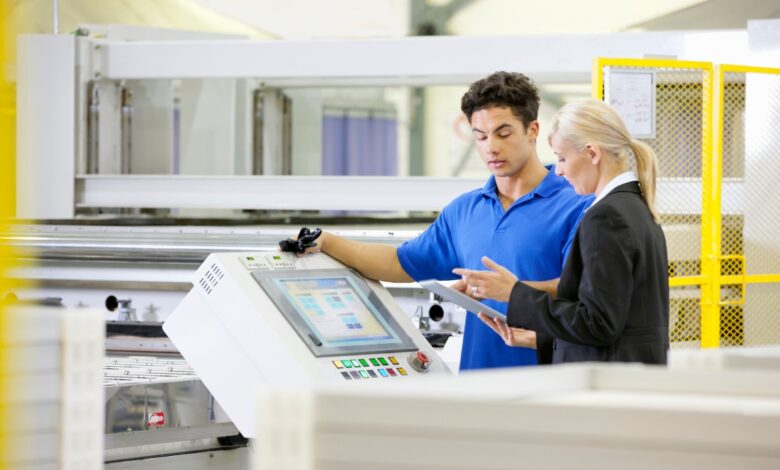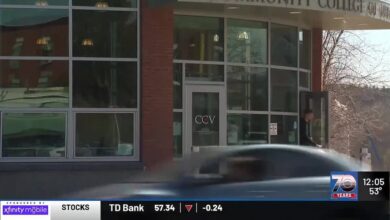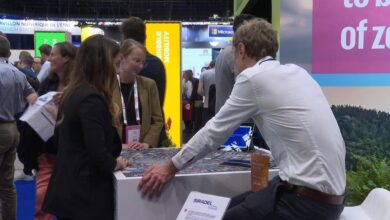How computer vision gives manufacturers an edge

Manual processes are still a vital part of the manufacturing industry. From assembly and machine setups to material delivery and logistics, human work on the shop floor is critical to delivery. For many industries, that’s unlikely to change soon.
At Deltia.ai, we believe that there’s huge potential in identifying how these manual processes can be optimised. But when it comes to figuring out how improvements can be made on the floor, things become more complex.
Data collection on production lines
To start, there’s very little tracked data for manual processes. While manufacturing execution systems (MES) can help monitor and control shop floor production, they can’t explain why issues occur.
Traditional methods can’t keep up: Manual observation takes ages (and wages). Data tracking is often flawed, and if you’re spending all of your time on granular data collection, it’s hard to find time to spare for actually streamlining your operations.
It’s also hard to identify focal points for improvement. Unless you deploy a committed team (expensive) or a staff member with a thousand eyes (dear reader, given today’s shortages in skilled labour, such mythical creatures are in short supply), you’re out of luck.
Even the best teams can use some extra help.
Modern problems demand modern solutions
So, if massive teams of line monitors aren’t feasible, and many-eyed monsters bring bad vibes to the shop floor, production managers and process engineers need a better way to gather actionable insights. That’s where computer vision and AI come in.
First, it’s important to understand what we mean when we say “computer vision.” IBM defines it as “a field of artificial intelligence that uses machine learning and neural networks to teach computers and systems to derive meaningful information from digital images, videos and other visual inputs — and to make recommendations or take actions when they see defects or issues.”
This has huge implications for the manufacturing industry. Cameras on the shop floor can monitor many stations at once, and easily collect thousands of data points.
“Amidst the worldwide shortage of skilled labour, computer vision emerges as the driving force behind the digital transformation of production facilities. Through this technology, we amplify human capabilities and transform the production landscape. Our vision propels us towards a future where proficient workers receive support from cutting-edge technology, enhancing efficiency and facilitating the effective communication of their expertise. This vision aligns with the escalating demands for both the quality and quantity of products,” said Maximilian Fischer, Co-founder and CEO, Deltia.ai.
In the past, computer vision applications were mostly limited to the area of quality control. However, tools that effectively combine computer vision with the processing power of AI have the potential to improve operations in a variety of areas, including:
Computer vision-based platforms help document and digitise manual work, providing analytics on efficiency and suggesting ideas on reducing downtime.
- Enhancing worker capabilities
Implementing a computer vision solution supplements a shortage of skilled labour by providing training and assistance.
Computer vision systems can provide instant alerts and ensure that production lines meet safety standards, keeping people on the floor safe from accidents and errors.
- Improving operational efficiency
Computer vision platforms learn over time, and can provide increasingly specific suggestions for improvement. These systems also catch problems as they happen, sending real-time notifications to plant managers, who can adjust or stop work as needed.
Computer vision and technical debt
Not all solutions are created equal. Companies looking to transform their shop floor operations often don’t have the time or money to take on a lot of technical debt.
The benefit of computer vision is that it’s simple to install (even on a single production line), and requires minimum hardware to get going.
AI does the computational and analytical heavy lifting, providing users with easy to understand charts and data points. The learning curve is minimal, allowing for easy onboarding for process engineers and other employees in charge of monitoring output and efficiency. Time that used to be spent on in-person data gathering can instead be spent on improving processes and training.
For production lines with shorter cycles, AI can start identifying patterns in as few as one or two shifts. Proof of concept happens quickly, without the need for a massive upfront investment.
Finding the right solution for your shop floor
Manufacturing companies that rely heavily on manual processes don’t have to spend a lot of time and money on digital transformation.
Deltia.ai offers an AI-based process analytics and monitoring platform, along with camera installation on your shop floor. No fancy cameras, complex calibration, or super special lighting conditions needed. We’re backed by leading investors Cavalry Ventures and Merantix, and currently used by large manufacturers such as Viessmann and the Swiss technology group ABB.
Since installing Deltia.ai, ABB has increased productivity by 15 percent, and will soon add it to even more production lines. At a Viessmann plant in Legnica, Deltia.ai’s technology is currently observing 45 employees. According to Viessmann manager Bartłomiej Magiera, he has been able to increase productivity by 20 percent since installation. Magiera expects up to a 50 percent increase in productivity if Deltia is added on all of the plant’s lines.
The Deltia product is built by people with a deep understanding of the day-to-day problems of the factory floor. The result? Real-time transparency and deep insights into how to improve efficiency and quality in manual processes.
Visit Deltia.ai here to learn more about how computer vision can work for you.

Silviu Homoceanu is the Founder and CTO at Delta.ai.
Silviu has a Ph.D. in computer science and is a computer vision expert. He previously led a team that developed a robot taxi service at Volkswagen.



